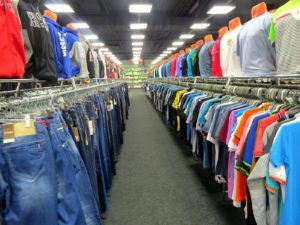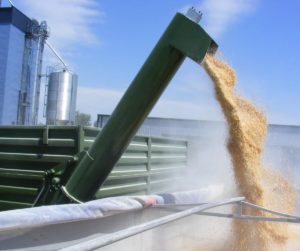
Housing commissioning in Ukraine in January-March 2019 increased 32.3% compared with the same period in 2018, to 2.453 million square meters. According to the report, 1.394 million square meters of housing were commissioned in cities in the first quarter (56.8% of the total volume), while 1.06 million square meters in rural areas. At the same time, 61.7% of the total housing was commissioned in single-family houses, 38.3% in houses with two or more apartments.
In general, during the reporting period some 26,098 apartments were commissioned, including 16,900 apartments in cities and 9,200 apartments in villages.
The average area of apartments was 94 square meters, while the average area of apartments in single-family houses was 154.1 square meters, in houses with several apartments – some 57.8 square meters.
Some 51.7% of the total volume of housing was commissioned in Kyiv city and region, as well as in Lviv, Ivano-Frankivsk and Chernivtsi regions, in particular, 174,300 square meters (7.1%) in Kyiv.

The Antimonopoly Committee of Ukraine has fined PrJSC Kuznya on Rybalsky plant (Kyiv) UAH 136,000 for submission of inaccurate information in 2018 in relation to seven companies.
According to the decision made on May 20 by the competition agency, unreliable information was submitted while Sergiy Tigipko received permission to concentrate indirectly the Kuznya on Rybalsky plant’s shares in 2018 through Evinz Limited.
According to the decision, the committee on October 18, 2018 granted permission for concentration, based on information about the relationship of control only with Bud-Renovatsiya LLC and Land Development Ltd. Plus.
At the same time, on December 28, 2018, the committee received a petition from the authorized representative of PrJSC Kuznya on Rybalsky plant, which said: the shipyard is also connected by control relations with a number of subsidiaries – the House of Culture, the Medical Sanitary Department, LK-Metallurgy, catering subsidiary Parus, Housing-Operational Office-LK, Vnesheconomservice and Kyivgeist Investment LLC (all based in Kyiv).
Thus, the House of Culture and the Medical Sanitary Department also lease their own real estate, namely office, industrial and warehouse premises within Kyiv city.
According to the committee, the cumulative share of participants in the concentration in 2016-2018 of the rental industrial real estate market within Kyiv city does not exceed 5%, therefore, the provision of inaccurate information did not affect the committee’s decision to give permission for concentration.

Shoes and clothing are the most popular online purchases for Ukrainians, with 70% of Internet users ready to make such purchases. That’s compared to only 24% who are willing to buy food online, according to results of a survey conducted by GfK Ukraine released on Monday. “Interestingly, for the food category, 13% of respondents say they would like to buy this category, but do not have this opportunity. Most likely, the reason is the insufficient convenience of the ordering and delivery of goods in this category, as well as the insufficient number of sites for such purchases,” GfK’s press release said. Only 6% said the same applies to buying shoes and clothing online.
Electronics and home appliances are also popular online purchases, with more than half of Internet users are ready to purchase them online. They are followed by cosmetics – about 38%, toys and children’s products – more than 25%. The study indicates the inability to buy goods in these categories is lower than in the case of clothing and shoes and food.
According to GfK Ukraine, 66% of the population of Ukraine used the Internet in 2018 (61% in 2017), of which 34% make online purchases.

Risoil S.A. boosted grain transshipments by almost 1.5 times to 1 million tonnes in the first five months of the 2019 calendar year, according to Risoil’s report on Facebook.
“In the five months of 2019, the group of Risoil terminals processed more than 1 million tonnes of grain for export. Last year, 682,000 tonnes were handled during the same period,” the statement said.
According to the company’s website, Risoil, TransBulkTerminal and Metinvest together with Odesa Railways have been implementing a pilot project to optimize cargo traffic. Within its framework, terminals and ports provide information on expected ship calls, the availability of free containers for grain, and the need to transport a particular grain crop. The railway, in turn, transports needed amounts of necessary crops. This allows participants in the project to optimize traffic, increase terminal unloading and reduce the turnover of cars.
As reported, Risoil S.A. in marketing year 2017/2018 increased the transshipment of grain freight by 20,000 tonnes, to 1.64 million tonnes, while oil handling grew by 11%.
Risoil S.A. was established in Geneva (Switzerland) in 2000. Its core business is logistics of oil, bulk and general cargo in the ports of the Black Sea, sale and production of vegetable oils, trade in grain and oilseeds in containers, storage and processing of agro-industrial products.
Risoil Terminal in Chornomorsk seaport was launched in 2016.